This Persian basmati rice with cabbage (kalam polo) is full of flavor, scented with saffron and features a crispy onion crust (tadigh).
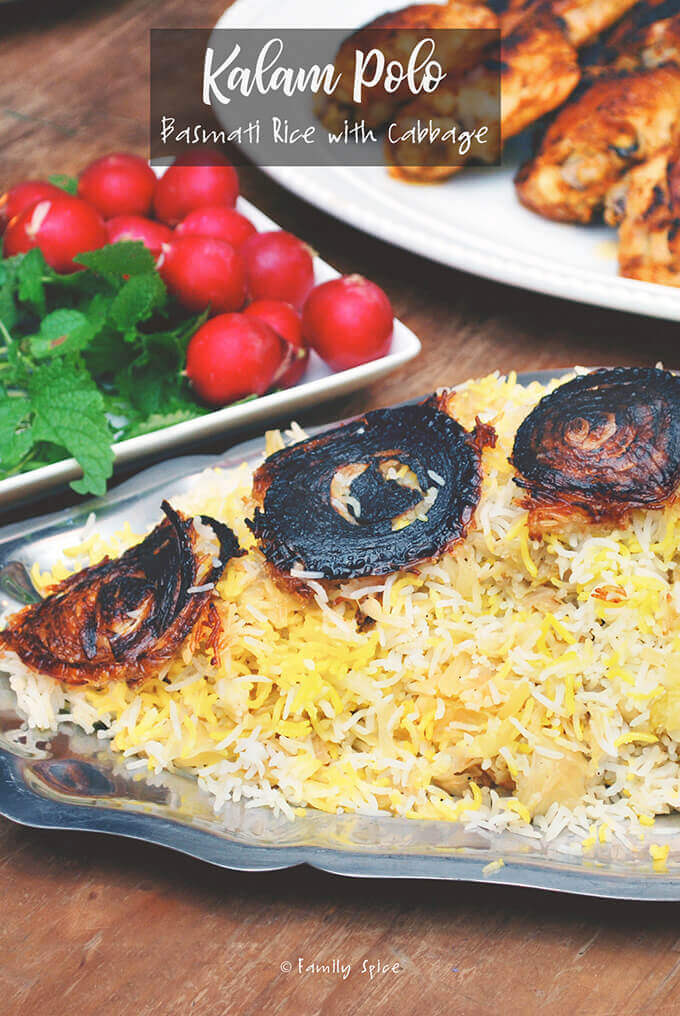
I am half Persian and my Persian side of the family is full of wonderful and talented cooks. My family’s love for good food was instilled by my grandmother, who married very young and was always cooking amazing meals for her ever growing family.
My mother may have a PhD, but she too is a very talented cook and I grew up with delicious home cooked meals. It shouldn’t surprise you when I share that my uncle is also an amazing cook. And he was the one who introduced kalam polo to me.
Persian rice dishes (polo)
When I say Persian rice, I am always talking about one specific kind of rice: long grain basmati rice. This aromatic rice is something very special. There are many varieties available, most grown in India. I’m personally fond of Royal, Pari and Zaffarani brands of basmati rice.
White rice (chelo) is served as a base for kabob and stews. The rice is usually garnished with some saffron, giving it that bright yellow color.
Other rice dishes (polo) can contain vegetables, herbs, dried fruits, lentils and meat. These types of rice dishes are served as standing meals or part of a large buffet for parties. This recipe for cabbage rice (kalam polo) is prepared without meat baked in it, so I use it as a side dish.
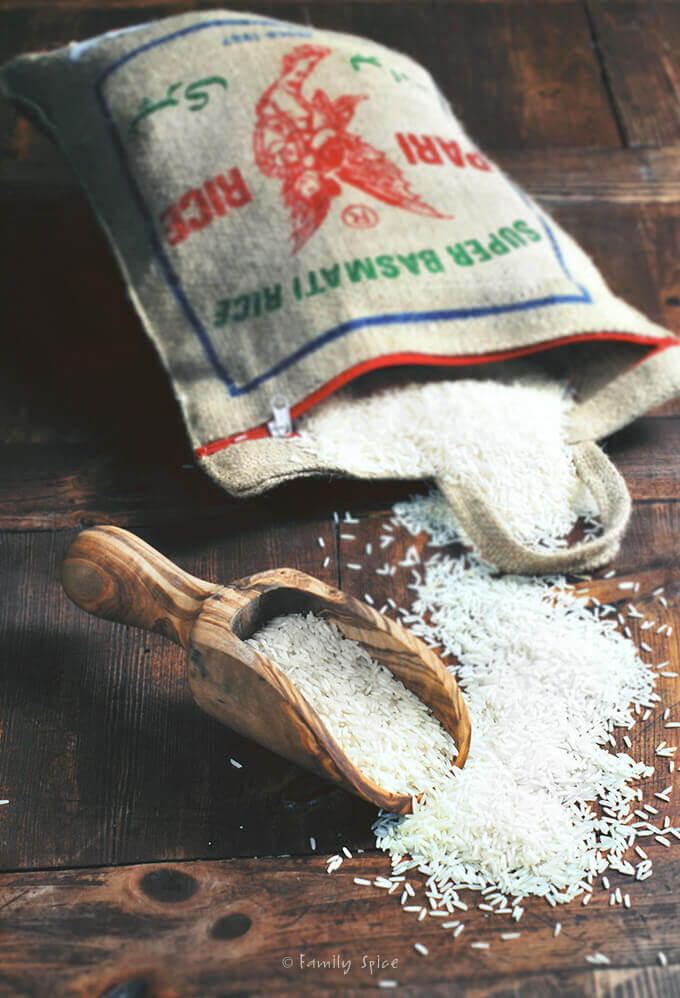
Crust from the bottom of the pot (tadigh)
Persian rice can be made traditionally in a pot over the stove, baked in the oven (for tahchin) or prepared in a rice cooker. If you have ever sat down for a Persian meal, then you know about tadigh, the crispy crust from the bottom of the pot. Only certain rice cookers can create tadigh, which is why I like to prepare rice traditionally in a pot.
Tadigh can be made with rice, potatoes, onion slices, pieces of lavash or even tortillas. For a rice crust, some people mix a bit of rice with yogurt to create a thicker tadigh. My family really loves potato tadigh – I mean it’s crispy potatoes, what’s not to love?
Lavash and tortilla crusts are wonderful to serve when you have a stew (khoresht) because they are strong enough to hold the stew you heap onto it. For this cabbage rice dish, I chose to use onions for the tadigh. I always use extra virgin olive oil when I am preparing rice and tadigh, but you can any neutral tasting oil.
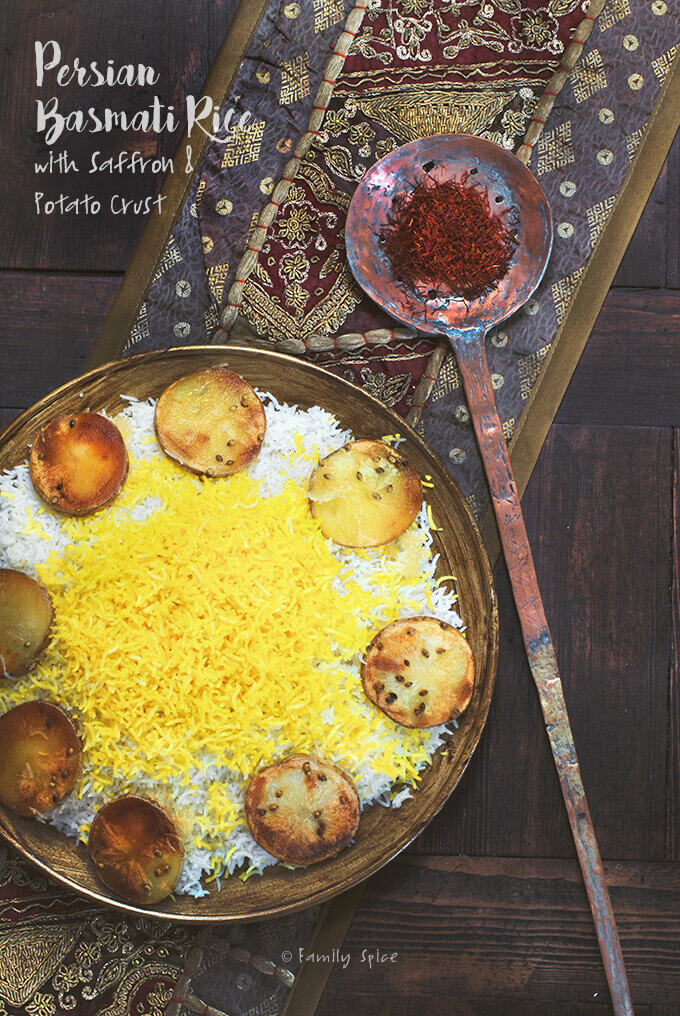
How to prepare kalam polo
Whether you are preparing this cabbage rice or herb rice (sabzi polo) or any polo, you will be adding alternate layers of half-cooked rice and your filling into the pot. You do not want to add raw vegetables in with the parboiled rice because as the vegetables cook, they release water and this will make your rice mushy and sticky.
For kalam polo, this means that the shredded cabbage must be sautéed first. Once sautéed, it is time to assemble your dish to finish cooking. You will add oil to the bottom of the pot, then the onion slices.
The rice is only partially cooked. The center of each rice is still raw. You will alternate layers of rice and cooked cabbage until the pot is filled. Pour in your saffron water, cover the pot and steam your rice until it is fluffy and finished cooking.

How to serve kalam polo
This dish does not have meat in it. Persian polo can be prepared with or without meat. I personally don’t like having meat in it as it can dry out the meat. The meat can be beef, lamb or chicken. It is a very versatile dish.
So I like to pair my rice dishes with some chicken thighs, lamb shanks or a roast chicken of some sort. Because kalam polo is made with cabbage, you could serve it with your baked corned beef.
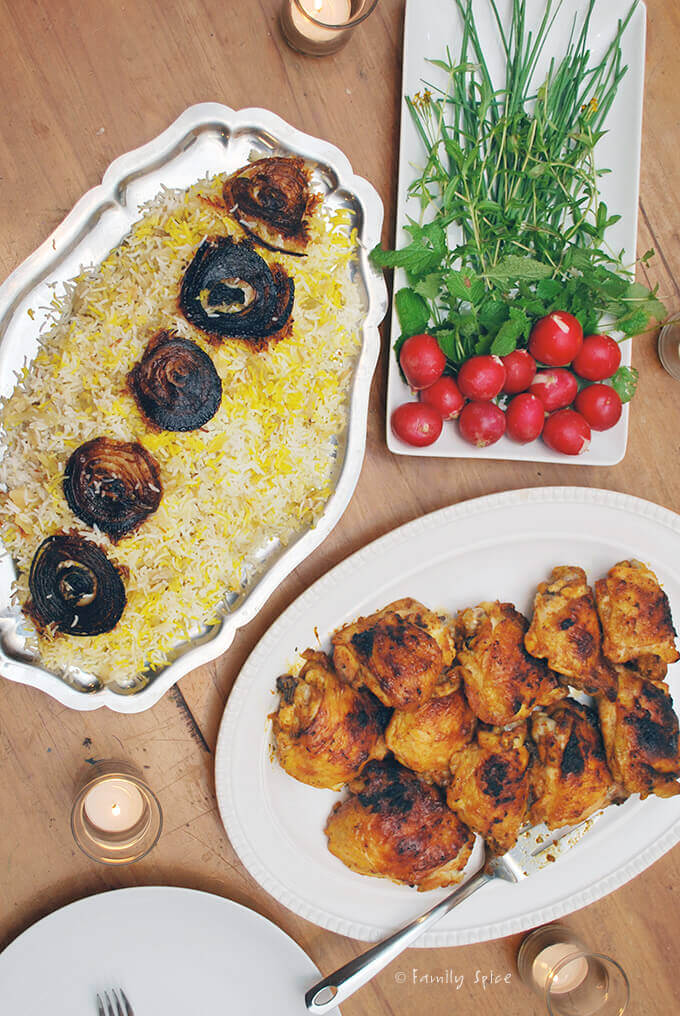
Basmati Rice with Cabbage (Kalam Polo)
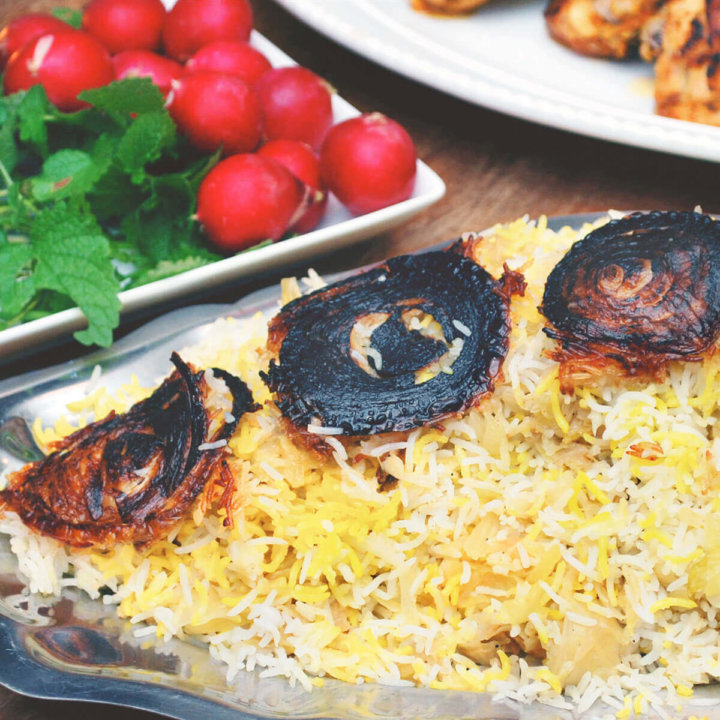
This Persian basmati rice with cabbage (kalam polo) is full of flavor, scented with saffron and features a crispy onion crust (tadigh).
Ingredients
- 3 cup basmati rice
- 2 TBS + ½ teaspoon salt
- 1 TBS hot water
- ⅛ teaspoon crushed saffron
- 2 TBS extra virgin olive oil
- 1 head of cabbage, green, cored and shredded
- ⅛ teaspoon black pepper, ground
- 1 large onion, peeled and cut into ¼-inch thick rounds
Instructions
- In a medium-sized bowl soak rice with water.
- Gently wash the rice by stirring the rice in the water with your hand. This helps wash some of the starch and grit out. Pour out the water and repeat two more times.
- After washing the rice a third time, rinse and then cover rice with water and add 1 TBS salt.
- In a small bowl combine crushed saffron with 1 TBS hot water and set aside.
- In a 5-quart non-stick pot add 8 cups of water and 1 TBS salt and bring to boil.
- While waiting for the water to boil, heat a large pan over medium-high heat and add 1 TBS olive oil.
- Sauté cabbage in batches until vegetables start to wilt, approximately 3-5 minutes, remove from heat and season with ½ teaspoon salt and pepper.
- When the water has come to boil, pour out the water in the bowl containing the soaking rice. Add the wet rice to the boiling water.
- When the water comes to boil again and the rice floats to the top of the pot (approximately 6 minutes), pour the contents of the pot into a fine colander. You know your rice is ready to strain if you bite a rice kernel and the center is still uncooked.
- Return the pot to the burner, set heat to medium and add 1 TBS olive oil.
- Arrange the onion slices along the bottom of the pot, in the oil.
- Using a spatula, gently scoop the drained rice covering the onions, forming the first layer of rice in the pot. Make sure you do not push the rice in together as this will result in mushy rice
- Spread some of the cooked cabbage over the first layer of rice.
- Continue alternating layers of rice and cabbage until you are finished with both and ending with a rice layer. Your pot should not be filled to the top. You will need about 3 inches between the top of your rice and the top of the pot.
- If you must tap the rice off of your spatula, do not tap it against the pot. This will move the rice in the pot and press them together. Tap your spatula against the colander.
- Using the handle of a long wooden spoon or another utensil, gently press several holes around the rice down to the bottom of the pot. This will allow the steam to travel freely through the pot.
- Pour the saffron mixture over the top layer of rice.
- Cover the lid of your pot with a clean towel or several paper towels, and set firmly over your pot to prevent steam from escaping. The towel will keep the condensation from dropping back into your rice and turning the rice into mush.
- After 7 minutes, lower the heat to low and let the rice finish cooking for another 45 minutes. You will know your rice is done because it has fluffed up. Another trick to see if your rice is down is to lick your finger and quickly touch your wet finger against the side of the hot pot. If you hear a sizzle sound, your rice is done (and hopefully your finger isn't burned!).
- To serve, you can place a large round platter over the top of the pot, then carefully invert the pot and remove gently. This will create a cake-effect, with the onion crust showing on top. Or, you can use a spatula to gently remove the rice and scatter on your serving platter, creating a pyramid-effect, placing the crunchy onions on top or surrounding the rice.
Nutrition Information:
Yield:
6Serving Size:
1Amount Per Serving: Calories: 200Total Fat: 5gSaturated Fat: 1gTrans Fat: 0gUnsaturated Fat: 4gCholesterol: 0mgSodium: 212mgCarbohydrates: 36gFiber: 5gSugar: 7gProtein: 5g